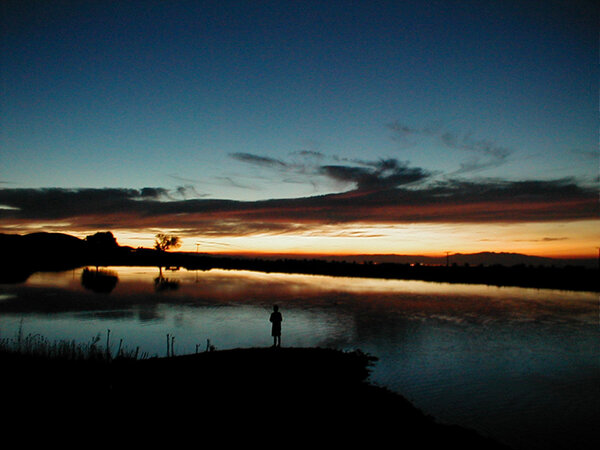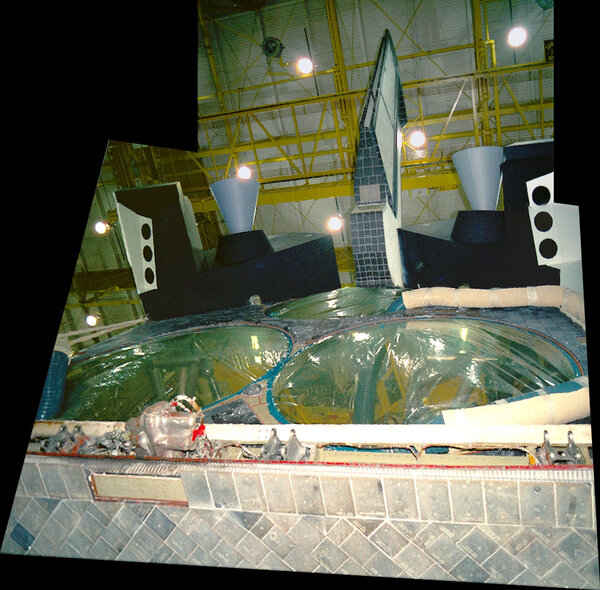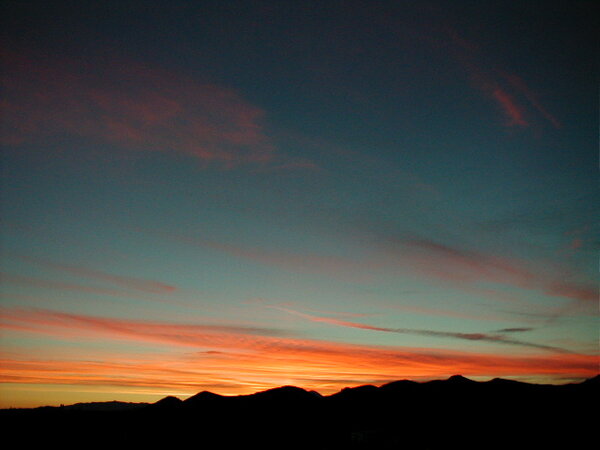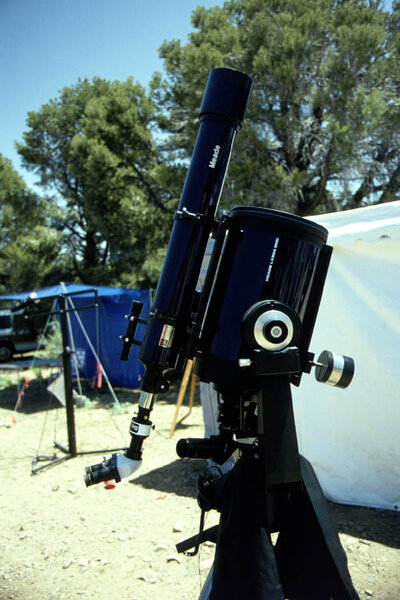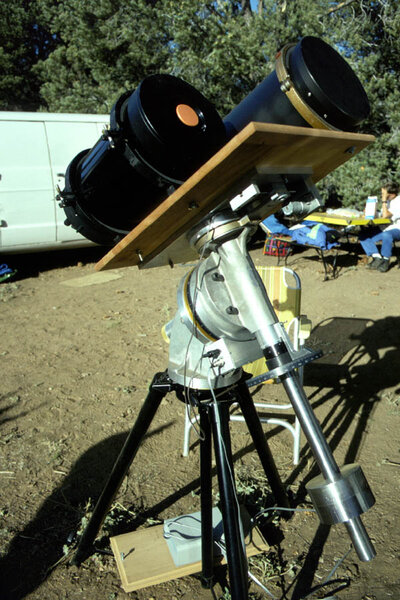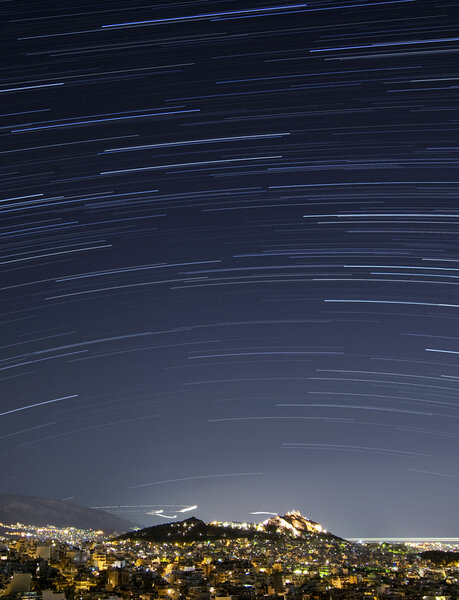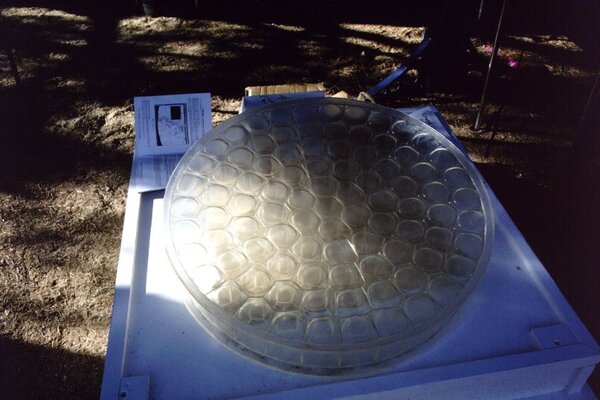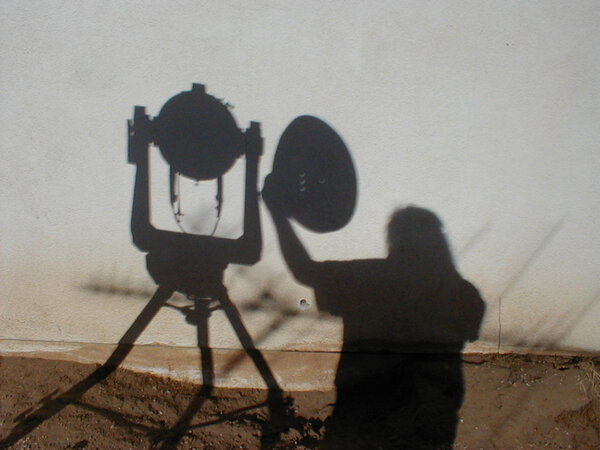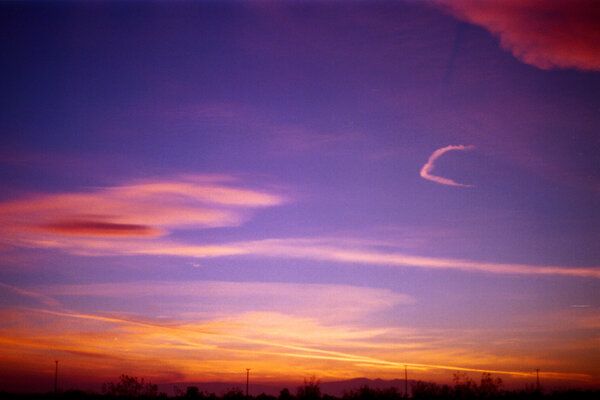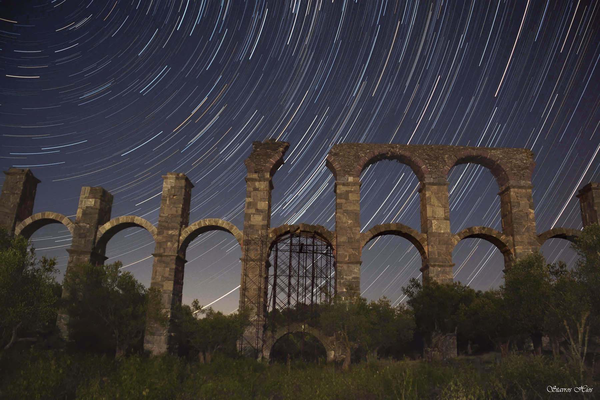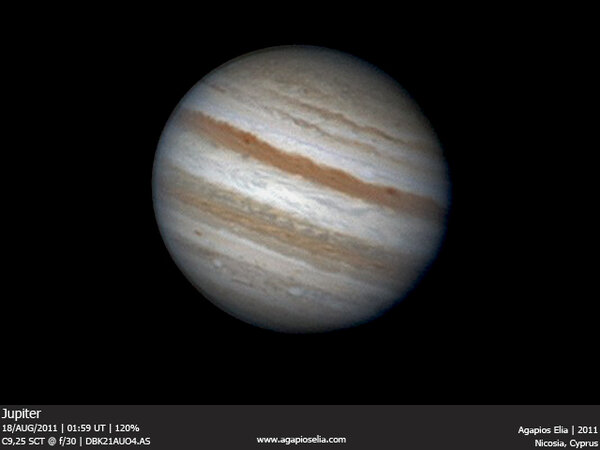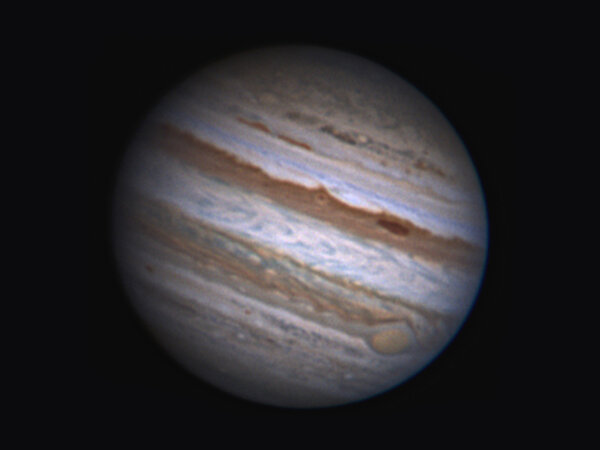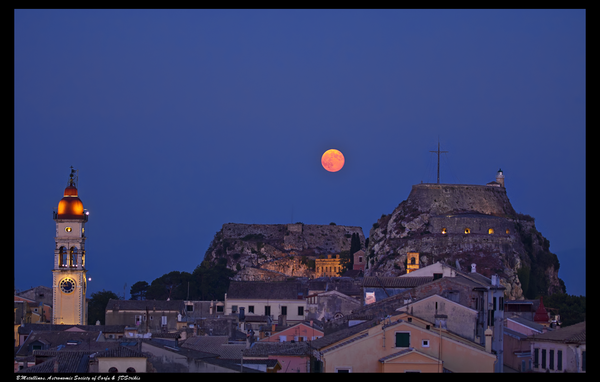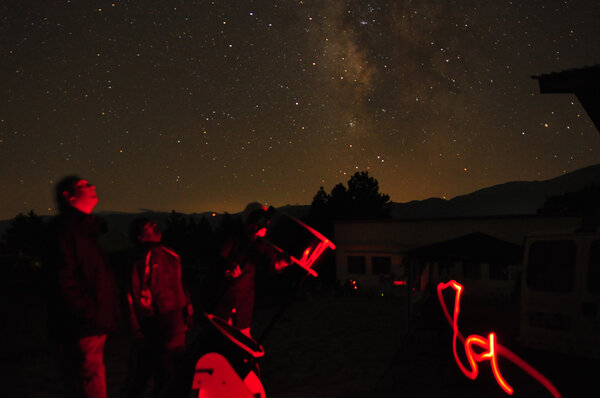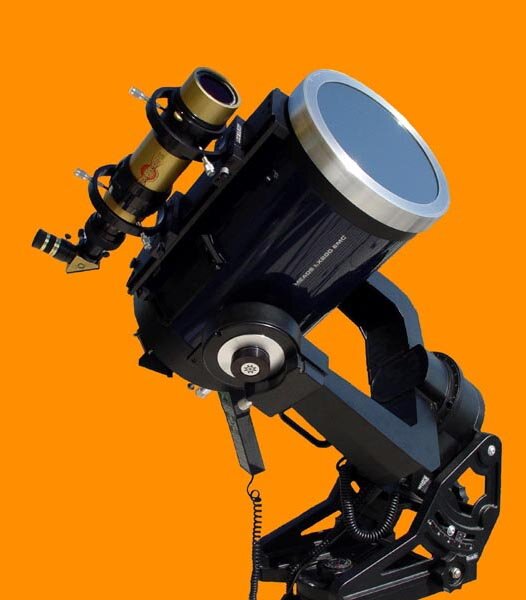-
Αναρτήσεις
1731 -
Εντάχθηκε
-
Τελευταία επίσκεψη
-
Ημέρες που κέρδισε
1
Τύπος περιεχομένου
Forum
Λήψεις
Ιστολόγια
Αστροημερολόγιο
Άρθρα
Αστροφωτογραφίες
Store
Αγγελίες
Όλα αναρτήθηκαν από Fred Ley
-
From the album: Personal Gallery Of Fred Ley
Sunset at our Club's annual picnic and waiting for the stars to come out. Taken July 20, 2000. 1.2 megapixel camera. -
From the album: Personal Gallery Of Fred Ley
Here we are looking up at the rear end of the Columbia. Its three engines have been removed as the Columbia was undergoing refurbishment in Palmdale, Ca at the time. Photo taken in 1999. -
From the album: Personal Gallery Of Fred Ley
Here is a nice evening image taken with a 1.2 megapixel camera on august 27, 2000. The location is about three miles south of Mojave, California at a friends home. -
From the album: Personal Gallery Of Fred Ley
A refractor with a Daystar Ha filter and a bino-viewer mounted on a Meade Schmidt Cassegrain. Kodachrome 64 slide taken at the 1993 RTMC. -
From the album: Personal Gallery Of Fred Ley
A couple of side-by-side mounted Schmidt Cassegrains on a Schaefer mount. Kodachrome 64 slide taken at the 1993 RTMC. -

Κύκλοι Telrad σε ερευνητή κουκίδας
Fred Ley απάντησε στην συζήτηση του/της KonstantinosM σε Λοιπά θέματα αστρονομικού εξοπλισμού
If in fact the Telrad does have a patent number, I believe that the patent number can be renewed prior to the expiration date. I used to meet with Steve Keufeld at the Riverside Telescope Makers Conference for years. He would always have this huge Telread made out of wood with him as a display. I don't believe that I have a photo of it, but there has to be a photo out there somewhere. Actually, I will look through my proceedings of each RTMC, until they were discontinued, to see if there is a photo of it in one of the issues. I used to tell him that he should attach it to the 200-inch at Palomar and take a photo of it. Fred -

Κύκλοι Telrad σε ερευνητή κουκίδας
Fred Ley απάντησε στην συζήτηση του/της KonstantinosM σε Λοιπά θέματα αστρονομικού εξοπλισμού
I believe that Steve Keufeld's design for the Telrad does have a U. S. Patent number to it. (OK, I'm doing other things at the moment and don't have the time to go and hunt down the Telrad box to check). There may be a Patent number on the unit itself. If so, that may explain why others have not used the identical circle pattern in their finders. There is a nice article on the history of the Telrad at... http://www.company7.com/telrad/ if interested. Clear skies, Fred -
-
From the album: Personal Gallery Of Fred Ley
Here is a large light weight honeycomb mirror blank. It is about 24-inches in diameter. Kodachrome 64 slide at the 1996 RTMC. -
From the album: Personal Gallery Of Fred Ley
This was taken during the Annular Solar Eclipse, viewable only as a partial eclipse from my home in California, on June 10, 2002. I am holding a large circular handmade hat from South East Asia and the pinholes are allowing for the solar image to pass through and onto the wall. -
From the album: Personal Gallery Of Fred Ley
Here is the sky as it appeared afthe the Sun set in October of 2000. The image has not been adjusted, colors are as they were recorded. -

ΡΩΜΑΙΚΟ ΥΔΡΑΓΩΓΕΙΟ ΛΕΣΒΟΥ ΚΑΙ ΑΣΤΡΙΚΑ ΙΧΝΗ
Ο Fred Ley σχολίασε σε stavrakis για αστροφωτογραφία Πορτρέτα του ουρανού
-
-
-

Full Moon, Corfu Old Town 14 Aug. 2011
Ο Fred Ley σχολίασε σε Bi2L για αστροφωτογραφία Σελήνη wide field
-
One simply divides the appearant field of view of the eyepiece by the magnification it gives in the system being used at that particular moment. Hope this answers your question. Fred
-

Χρειάζομαι μια Schmidt camera!
Fred Ley απάντησε στην συζήτηση του/της giorgosgr σε Εξοπλισμός για αστροφωτογράφηση
Guess I'll have to go and check out the new manual as the one I sent to you is 33 years old. Fred -

Χρειάζομαι μια Schmidt camera!
Fred Ley απάντησε στην συζήτηση του/της giorgosgr σε Εξοπλισμός για αστροφωτογράφηση
Hi George, You will be having lots of fun with the Schmidt Camera. Years ago a friend of mine bought an 8-inch model and used it to take some pretty nice images in short time. I don't know if you were given the Celestron Operating Manual for the camera. So, attached to this message is a pdf of the 1978 Celestron Operating Manual for you to view or print out. I have had to reduce the size a bit, as I quickly found out that there is a 5mb file size limit, but it should still be readable. Have a blast. Fred Celestron 1978 Schmidt Camera Operating Manual.pdf -

5η Πανελλήνια Εξόρμηση Ερασιτεχνών Αστρονόμων
Fred Ley απάντησε στην συζήτηση του/της astrovox σε Η αστρονομία στην Ελλάδα
If one approaches the holding of the annual star party from the viewpoint of "star party/visit a new area of Greece" combination, then my idea simply crumbles. Personally, when I attend an event I only go for the event and not the local area. Of course, one will be exposed to the surroundings and be able to take some of it in. Perhaps the concept of annual regional events could be looked at. As an example, if 40 of the 50 astronomy enthusiasts in a certain geographical region could not attend an event far away due to time, economic or transportation issues, a regional event would be easier and allow easier access to those who could not make it to the major annual event. That way all those interested have access to an event and no one is left out. Dimitri, I can envision where the island of Crete has a large enough of an astonomy presenece that it could support an annual event with just the attendance of the local members as do many other places in Greece. Oh well, things have come a long way from when I was wondering why there were no astronomy gatherings in 1971. I am just the throwing out ideas. If the majority of the observers are happy with the way things are, that's fine and things can stay just the way they are. No complaints on my end. Keep looking up. -Fred -

5η Πανελλήνια Εξόρμηση Ερασιτεχνών Αστρονόμων 29/7/2011
Ο Fred Ley σχολίασε σε ngc1974 για αστροφωτογραφία Αστρονομικές δραστηριότητες
-

5η Πανελλήνια Εξόρμηση Ερασιτεχνών Αστρονόμων
Fred Ley απάντησε στην συζήτηση του/της astrovox σε Η αστρονομία στην Ελλάδα
Hi List Members, I'd like to throw out an interesting concept in regards to the annual star party. In order to make the star party equally accessible to all obserers, would it not be easier to hold the event somewhat in the geographical center of Greece? Having a permanent site would be nice. I do understand that those who live on the many islands would be placed at a certain disadvantage with this concept. Due to rising transportation costs, having a pretty equal distance to travel lessens the financial burden on the observer. There is also the long term possibility of perhaps purchasing or leasing a site. That would be a great idea. That way observers know that once a year a star party will be held, in a particular month and without lunar interference. Of course with the creation of any "organization" on this goofy planet of ours, the political and personal aspirations of individuals needs to be placed at the end of line and the possibility, as in this case, of the observers getting together in fellowship and having a great time under the night sky is the paramount objective. Perhaps we can pettition the Greek Government for a few acres of land? Many times persons immediately gravitiate to the thought of "it can't done" instead of "it can be done." I firmly believe that it can be done. There may even be an entity within the European Union that may be able to lend its muscle to assist in an endevour of this nature. We want to have a good time and concurrently promote science. Clear Skies, Fred -

Υπάρχει πιθανότητα να είναι μετεωρίτες????
Fred Ley απάντησε στην συζήτηση του/της a_sco2001 σε Παρατήρηση κομητών, αστεροειδών, μετεώρων
Hi, From examining your photos, the samples that you have displayed do not, unfortunately, display characteristics of meteorites. A brief list of questions to ask oneself when having a suspect item is the following... ·Majority of meteorites will display some attraction to a magnet. ·Is there any rust viewable on the exterior? ·If there is a break on the object, does it show any shiny metallic flakes on the interior? ·Is there a dark fusion crust viewable or any thumbprint indentations? ·Is there a depression in the ground where it was fond? ·If there are any bubbles or pits in your sample, meteorites do not display this. ·Is your find different form the surrounding rock? ·Did you observe it fall? There is a nice web site that helps individuals in their process of identifying a prespective meteorite candidate, it is located at... http://www.meteoritemarket.com/metid1.htm The folks at this site also sell meteorites and related items. Just going through their web site and viewing the different images of iron and stoney meteorites is quite educational. There is also the site of the International Meteorite Collectors Association located at... http://www.imca.cc/ I hope that this may be of some help to you. Happy Hunting, Fred IMCA #9181 -

Jack Horkheimer : Star Gazer
Fred Ley απάντησε στην συζήτηση του/της kkokkolis σε Αστρονομικές Εκδόσεις
Hi, Years ago I would watch his show from time to time. It was a well done show and I am certain that he ignited an interest, in many people, about the starry sky above us. -Fred -
From the album: Personal Gallery Of Fred Ley
Here is a setup for observing the Sun in white light and in hydrogen-alpha (Ha). The large instrument is a rare 10-inch f/6.3 SCT and the Ha telescope has a 60mm objective lens. -

Περιεργο Αντικειμενο
Fred Ley απάντησε στην συζήτηση του/της michael497 σε Αστρονομική Παρατήρηση - Γενική συζήτηση
Hi, Some years ago I was with a group observing Comet Hale-Bopp near my home in southern California. The sky had just gotten "dark". Someone in the group alerted us to an interesting event which turned out to be the disintegration of a rocket booster or satellite. We could see the glowing pieces peel off of the satellite as it entered the atmosphere. We watched the event in binoculars and it was very slow moving. It was first observed in the north-west and we were able to follow it until it disappeared behind the distant mountains. If what you observed also had pieces peeling off of it, I would think that it would be a safe bet that it too was a piece of "space junk" entering the atmosphere. Here is an interesting site that may be of use to you regarding the reentry of items. http://www.aero.org/capabilities/cords/reentries.html -Fred


